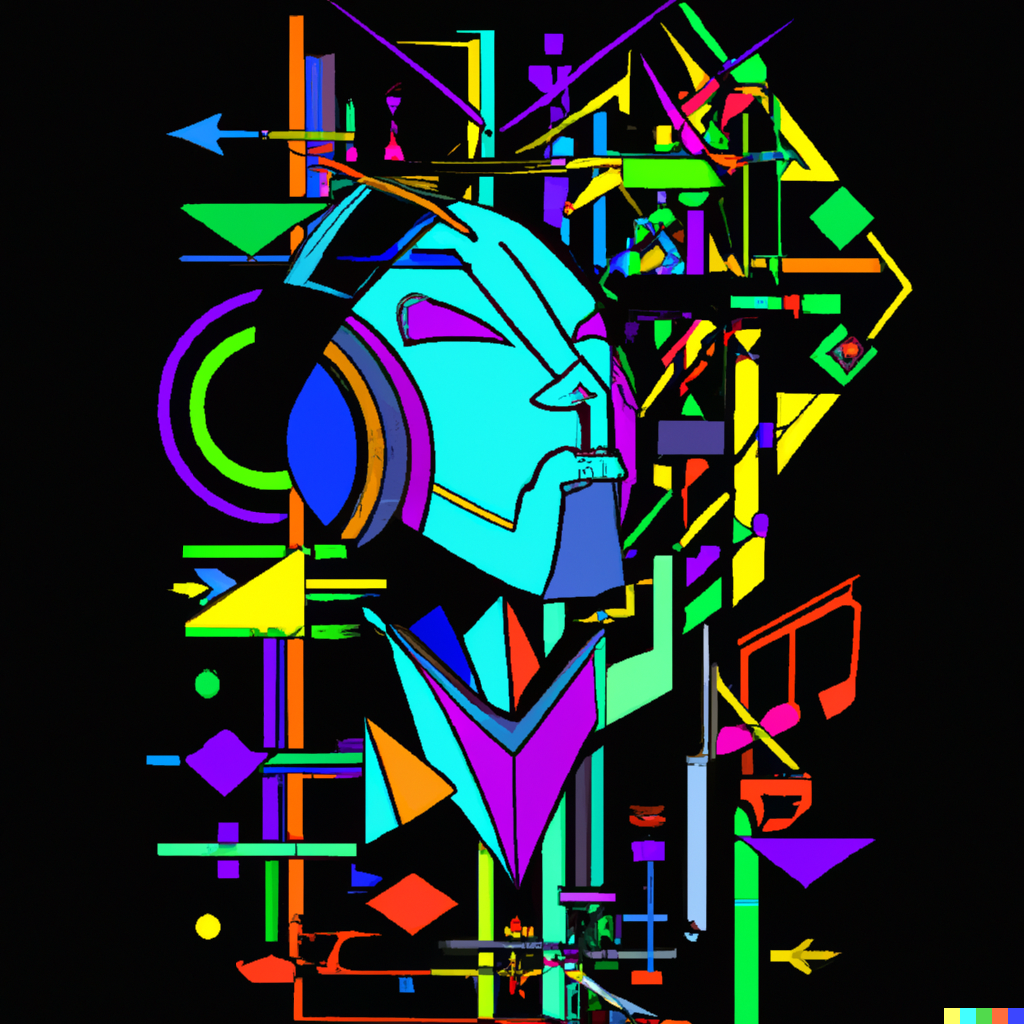
“When we extend our senses, we extend our knowledge.” (Harbisson, 2012)
What would life be like if we were not limited by our physical anatomy? What experiences and knowledge are most of us possibly missing out on currently? This article delves into the world of cyborgs and uses Neil Harbisson, a self-proclaimed cyborg, to show how we can overcome our limitations. The exciting possibilities of direct brain-to-brain communication and the ethical implications of self-improvement through technology will also be explored.
“When we extend our senses, we extend our knowledge.” (Harbisson, 2012)
What would life be like if we were not limited by our physical anatomy? What experiences and knowledge are most of us possibly missing out on currently? This article delves into the world of cyborgs and uses Neil Harbisson, a self-proclaimed cyborg, to show how we can overcome our limitations. The exciting possibilities of direct brain-to-brain communication and the ethical implications of self-improvement through technology will also be explored.


Cyborgs, short for cybernetic organisms, are beings that combine both biological and technological components in their bodies to enhance their physical, cognitive or sensory capabilities. The term can refer to any organism that has been modified by the integration of technology, from a simple pacemaker in the human heart to sophisticated prosthetic limbs or even brain-computer interfaces (Llamas & Belk, 2022).In popular culture and science fiction, cyborgs enjoy a great deal of popularity, usually portrayed as futuristic beings that are far removed from their original human form. However, we often fail to realize that humans have already started to incorporate technology into their bodies to enhance their abilities. One of the most influential cyborgs of the present day is Neil Harbisson, who was born with achromatopsia (color blindness) and learned to re-experience colors through what he calls the eyeborg. His journey to cyborgism first began with cybernetics expert Adam Montadon, who developed the cybernetic device that Harbisson now sports as a headband.
A small camera attached to this headband records the colors in front of him and sends them to a small computer that Harbisson carries around with him. The computer analyses the color information and translates it into sound waves using a predefined scale. Each color is associated with a particular sound, so Harbisson can hear the colors as different musical notes. For example, red can be associated with a C, while blue might correspond to a D. The sound waves are then transmitted through a bone-conduction speaker implanted in Harbisson’s skull. The speaker vibrates the bones in Harbisson’s head, which then transmits the sound waves directly to his inner ear (Yasenchack, 2015).
To him, the device is more than just a useful tool: it has become a part of his identity. Although he is now able to experience everyday life as if he had never been colorblind, due to his unique appearance he faces a range of new challenges, from discrimination to physical harassment. Because, while some people openly embrace and endorse the idea of merging human biology with technology, others have a deep-seated fear of it. Cyborgs blur the lines between what is natural, and what is artificial, and this ambiguity can leave people feeling uneasy and quickly lead to discriminatory behavior. Perhaps the greatest contributor to our fear of cyborgs is science fiction and popular culture, which has long portrayed them as dystopian creations, often out of control and posing a grave threat to humanity. From Terminator to I, Robot, cyborgs have become a symbol of our collective anxiety about the role of technology in our lives, and the potentially catastrophic consequences of getting it wrong. However, this fear may not be completely unprompted because there are certainly serious ethical concerns surrounding the creation of cyborgs, unequal access to technological enhancements being one of them. If technological enhancements became more widespread, it may deepen the already-existing gap between the wealthy and poor, simply because the wealthy would have more access to resources. While this may not necessarily create a new problem, it will certainly exacerbate an existing one.
“The world of cybernetics seems to yield endless possibilities: through microchips and magnetic implants.”
Harbisson endured several legal battles to be legally recognized as a cyborg, which now allows him to carry the device with him at all times. Eventually, the government even allowed Harbisson to wear his Eyeborg on his official ID picture. This not only legitimized his identity but also made experiences like going to the cinema easier, where he no longer had to explain that the camera was not there to record the film (Harbisson, 2012).
These legal battles made Harbisson realize that there is still no legal protection in place for cyborgs yet. Granted, seeing color is not something one necessarily needs for survival, but what about people with “more important” devices? At the time, he received many desperate letters from people who, for example, had lost their sense of smell and could no longer smell spoiled food or gas. This eventually led him and cyborg activist Moon Ribas to establish the non-profit Cyborg Foundation in 2010, which aims to promote the use of cyborg technology as a means of enhancing human potential and ultimately supporting a more inclusive and diverse society that accepts new forms of human identity and expression. (Home | Cyborg Foundation, 2020). Within the Cyborg Foundation, Harbisson and Ribas provide support and resources for individuals who wish to explore cyborg technology and develop their own cybernetic devices(Pearlmann, 2015). They accept requests from anyone that is interested in designing their own devices and enhancing their abilities and senses (Home | Cyborg Foundation, 2020).
The Cyborg Foundation is also used to showcase their unique works of art. Harbisson attempts to visualize how his auditory and visual senses have merged, creating visual representations of songs. Ranging from Vivaldi’s Spring to pop songs like Justin Bieber’s Baby, as displayed on the cover of this article. His sound portraits are a means of displaying how people’s faces sound to him. Connecting his senses transformed his view on art completely, even the way he defines beauty has changed. According to him, a pretty face does not equal pleasant sound frequencies. (Harbisson, 2018). The world of cybernetics seems to yield endless possibilities: through microchips and magnetic implants, some cyborgs can sense magnetic fields, lunar seismic activities or even listen to music without headphones (Llamas & Belk, 2022). On the topic of self-enhancement, the question arises as to where our limits lie and what the future might have in store. How could we enhance our perception and senses to achieve drastically new perceptions of life? Let’s say we dream big and tackle one of the fundamental problems of consciousness: qualia. In the future, would we be able to share qualia with the help of cybernetic devices?
The concept of sharing qualia, which refers to subjective sensory experiences such as taste, smell, and color, is still fiercely debated in neuroscience and philosophy (Rogg, 2021).
However, researchers may be in the process of putting an end to this debacle:
Direct brain-to-brain communication involves placing implants inside the brain that can detect and decode electrical signals, allowing researchers to interpret and transmit these signals to another person’s brain. One example is the BrainNet system, where two senders transmit information to a single receiver using EEG to detect and transmit electrical signals, which are then processed and transferred to stimulate specific areas of the receiver’s brain to create visual signals. (Jiang et al., 2018). The technology is still in its early stages and while brain-to-brain technology has the potential to facilitate communication of more objective information such as thoughts and emotions, sharing qualia is a much more complex process that is still not measurable or quantifiable. While the idea of sharing qualia through brain-to-brain communication is still largely speculative and hypothetical, ongoing research could unveil a realm of exciting possibilities, enriching interpersonal communication, sensory experiences, and our overall life experience.
When it comes to the subject of technology, especially in the context of cyborgs, there is always an undeniable component of suspense involved. While the prospects of limitless improvement are thrilling, there are valid concerns and fears that cannot be overlooked. But what if our human fear of the unknown is just holding us back from the possibility of experiencing the world in an entirely new way? What if, instead of fearing change, we embrace it and allow ourselves to push the boundaries of what it means to be human?
References
-
Harbisson, N. (2018). Hearing colors: my life experience as a cyborg. Research Papers in Economics, 117–125. https://doi.org/10.1142/9789813273009_0015
-
Harbisson, N. (2012). I listen to color [Video]. TED Talks. https://www.ted.com/talks/neil_harbisson_i_listen_to_color
-
Home | Cyborg Foundation. (2020). Cyborgfoundation. https://www.cyborgfoundation.com/
-
Jiang, L., Stocco, A., Losey, D. M., Abernethy, J. A., Prat, C. S., & Rao, R. P. N. (2018). BrainNet: a multi-person brain-to-brain interface for direct collaboration between brains. Scientific Reports, 9(1). https://doi.org/10.1038/s41598-019-41895-7
-
Llamas, R., & Belk, R. W. (2022). The routledge handbook of digital consumption. Routledge International Handbooks.
-
Neil Harbisson – Justin Bieber – Baby. (n.d.). Arthur. Retrieved March 16, 2023, from https://arthur.io/art/neil-harbisson/justin-bieber-baby
-
Pearlman, E. (2015). I, Cyborg. PAJ, 37(2), 84–90. https://doi.org/10.1162/pajj_a_00264
-
Rogg, R. (2021). Dialectics of qualia. an overview on different conceptions of the phenomenon of qualia.
-
Yasenchak, D. (2015). Filling the colorless void: the cybernetic synaesthesia of neil harbisson. Valley Humanities Report, Spring 2013.http://portal.lvc.edu/vhr/2013/articles/yasenchak%20final.pdf
Cyborgs, short for cybernetic organisms, are beings that combine both biological and technological components in their bodies to enhance their physical, cognitive or sensory capabilities. The term can refer to any organism that has been modified by the integration of technology, from a simple pacemaker in the human heart to sophisticated prosthetic limbs or even brain-computer interfaces (Llamas & Belk, 2022).In popular culture and science fiction, cyborgs enjoy a great deal of popularity, usually portrayed as futuristic beings that are far removed from their original human form. However, we often fail to realize that humans have already started to incorporate technology into their bodies to enhance their abilities. One of the most influential cyborgs of the present day is Neil Harbisson, who was born with achromatopsia (color blindness) and learned to re-experience colors through what he calls the eyeborg. His journey to cyborgism first began with cybernetics expert Adam Montadon, who developed the cybernetic device that Harbisson now sports as a headband.
A small camera attached to this headband records the colors in front of him and sends them to a small computer that Harbisson carries around with him. The computer analyses the color information and translates it into sound waves using a predefined scale. Each color is associated with a particular sound, so Harbisson can hear the colors as different musical notes. For example, red can be associated with a C, while blue might correspond to a D. The sound waves are then transmitted through a bone-conduction speaker implanted in Harbisson’s skull. The speaker vibrates the bones in Harbisson’s head, which then transmits the sound waves directly to his inner ear (Yasenchack, 2015).
To him, the device is more than just a useful tool: it has become a part of his identity. Although he is now able to experience everyday life as if he had never been colorblind, due to his unique appearance he faces a range of new challenges, from discrimination to physical harassment. Because, while some people openly embrace and endorse the idea of merging human biology with technology, others have a deep-seated fear of it. Cyborgs blur the lines between what is natural, and what is artificial, and this ambiguity can leave people feeling uneasy and quickly lead to discriminatory behavior. Perhaps the greatest contributor to our fear of cyborgs is science fiction and popular culture, which has long portrayed them as dystopian creations, often out of control and posing a grave threat to humanity. From Terminator to I, Robot, cyborgs have become a symbol of our collective anxiety about the role of technology in our lives, and the potentially catastrophic consequences of getting it wrong. However, this fear may not be completely unprompted because there are certainly serious ethical concerns surrounding the creation of cyborgs, unequal access to technological enhancements being one of them. If technological enhancements became more widespread, it may deepen the already-existing gap between the wealthy and poor, simply because the wealthy would have more access to resources. While this may not necessarily create a new problem, it will certainly exacerbate an existing one.
“The world of cybernetics seems to yield endless possibilities: through microchips and magnetic implants.”
Harbisson endured several legal battles to be legally recognized as a cyborg, which now allows him to carry the device with him at all times. Eventually, the government even allowed Harbisson to wear his Eyeborg on his official ID picture. This not only legitimized his identity but also made experiences like going to the cinema easier, where he no longer had to explain that the camera was not there to record the film (Harbisson, 2012).
These legal battles made Harbisson realize that there is still no legal protection in place for cyborgs yet. Granted, seeing color is not something one necessarily needs for survival, but what about people with “more important” devices? At the time, he received many desperate letters from people who, for example, had lost their sense of smell and could no longer smell spoiled food or gas. This eventually led him and cyborg activist Moon Ribas to establish the non-profit Cyborg Foundation in 2010, which aims to promote the use of cyborg technology as a means of enhancing human potential and ultimately supporting a more inclusive and diverse society that accepts new forms of human identity and expression. (Home | Cyborg Foundation, 2020). Within the Cyborg Foundation, Harbisson and Ribas provide support and resources for individuals who wish to explore cyborg technology and develop their own cybernetic devices(Pearlmann, 2015). They accept requests from anyone that is interested in designing their own devices and enhancing their abilities and senses (Home | Cyborg Foundation, 2020).
The Cyborg Foundation is also used to showcase their unique works of art. Harbisson attempts to visualize how his auditory and visual senses have merged, creating visual representations of songs. Ranging from Vivaldi’s Spring to pop songs like Justin Bieber’s Baby, as displayed on the cover of this article. His sound portraits are a means of displaying how people’s faces sound to him. Connecting his senses transformed his view on art completely, even the way he defines beauty has changed. According to him, a pretty face does not equal pleasant sound frequencies. (Harbisson, 2018). The world of cybernetics seems to yield endless possibilities: through microchips and magnetic implants, some cyborgs can sense magnetic fields, lunar seismic activities or even listen to music without headphones (Llamas & Belk, 2022). On the topic of self-enhancement, the question arises as to where our limits lie and what the future might have in store. How could we enhance our perception and senses to achieve drastically new perceptions of life? Let’s say we dream big and tackle one of the fundamental problems of consciousness: qualia. In the future, would we be able to share qualia with the help of cybernetic devices?
The concept of sharing qualia, which refers to subjective sensory experiences such as taste, smell, and color, is still fiercely debated in neuroscience and philosophy (Rogg, 2021).
However, researchers may be in the process of putting an end to this debacle:
Direct brain-to-brain communication involves placing implants inside the brain that can detect and decode electrical signals, allowing researchers to interpret and transmit these signals to another person’s brain. One example is the BrainNet system, where two senders transmit information to a single receiver using EEG to detect and transmit electrical signals, which are then processed and transferred to stimulate specific areas of the receiver’s brain to create visual signals. (Jiang et al., 2018). The technology is still in its early stages and while brain-to-brain technology has the potential to facilitate communication of more objective information such as thoughts and emotions, sharing qualia is a much more complex process that is still not measurable or quantifiable. While the idea of sharing qualia through brain-to-brain communication is still largely speculative and hypothetical, ongoing research could unveil a realm of exciting possibilities, enriching interpersonal communication, sensory experiences, and our overall life experience.
When it comes to the subject of technology, especially in the context of cyborgs, there is always an undeniable component of suspense involved. While the prospects of limitless improvement are thrilling, there are valid concerns and fears that cannot be overlooked. But what if our human fear of the unknown is just holding us back from the possibility of experiencing the world in an entirely new way? What if, instead of fearing change, we embrace it and allow ourselves to push the boundaries of what it means to be human?
References
-
Harbisson, N. (2018). Hearing colors: my life experience as a cyborg. Research Papers in Economics, 117–125. https://doi.org/10.1142/9789813273009_0015
-
Harbisson, N. (2012). I listen to color [Video]. TED Talks. https://www.ted.com/talks/neil_harbisson_i_listen_to_color
-
Home | Cyborg Foundation. (2020). Cyborgfoundation. https://www.cyborgfoundation.com/
-
Jiang, L., Stocco, A., Losey, D. M., Abernethy, J. A., Prat, C. S., & Rao, R. P. N. (2018). BrainNet: a multi-person brain-to-brain interface for direct collaboration between brains. Scientific Reports, 9(1). https://doi.org/10.1038/s41598-019-41895-7
-
Llamas, R., & Belk, R. W. (2022). The routledge handbook of digital consumption. Routledge International Handbooks.
-
Neil Harbisson – Justin Bieber – Baby. (n.d.). Arthur. Retrieved March 16, 2023, from https://arthur.io/art/neil-harbisson/justin-bieber-baby
-
Pearlman, E. (2015). I, Cyborg. PAJ, 37(2), 84–90. https://doi.org/10.1162/pajj_a_00264
-
Rogg, R. (2021). Dialectics of qualia. an overview on different conceptions of the phenomenon of qualia.
-
Yasenchak, D. (2015). Filling the colorless void: the cybernetic synaesthesia of neil harbisson. Valley Humanities Report, Spring 2013.http://portal.lvc.edu/vhr/2013/articles/yasenchak%20final.pdf



